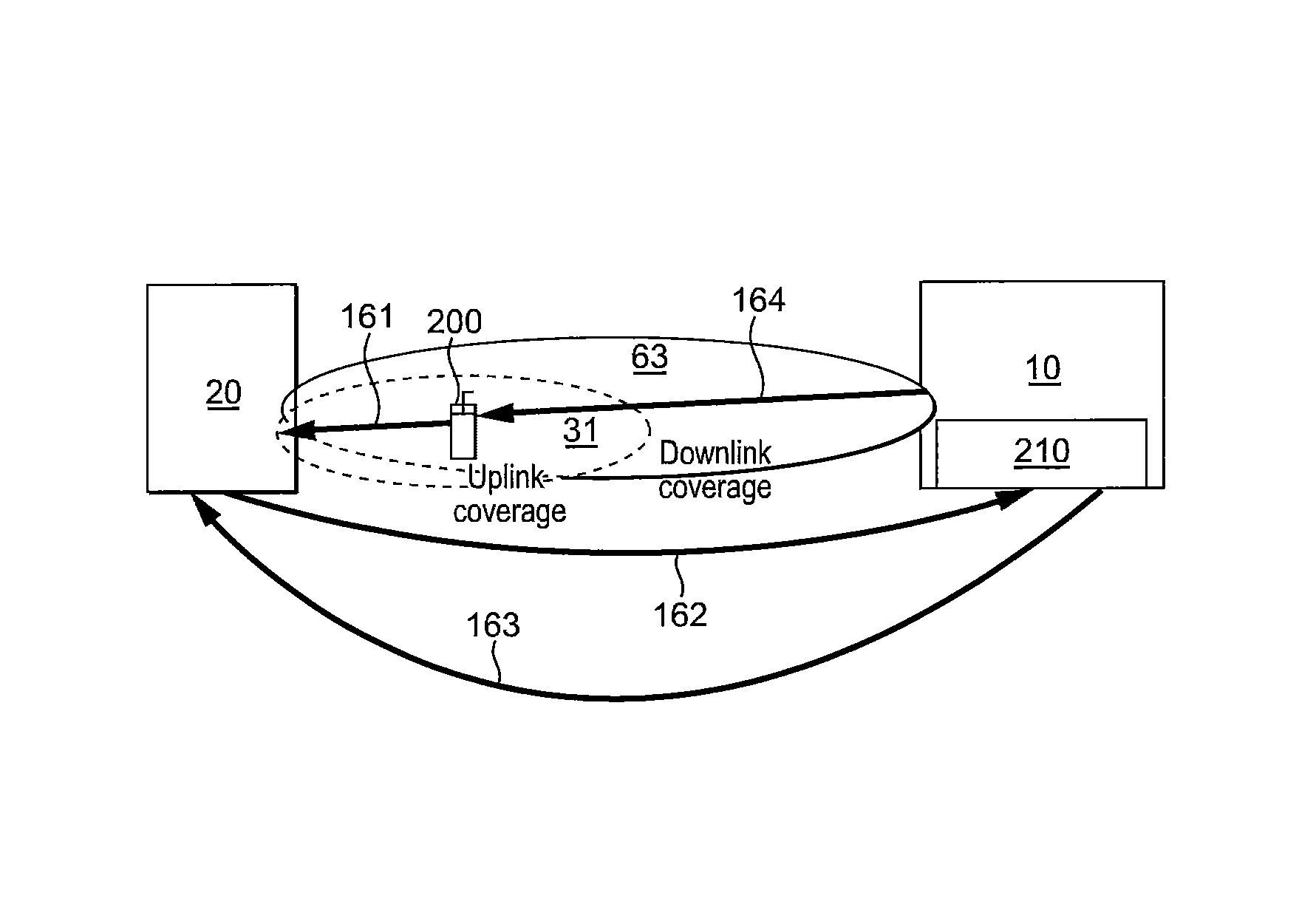Cellular communications network operation
a technology operation, applied in the field of mobile cellular communications network, can solve the problems of reducing the service life of cellular communications network, consuming a significant amount of energy, and unable to match the energy consumption to the required data traffic throughput, so as to reduce the energy consumption and increase the coverage area.
- Summary
- Abstract
- Description
- Claims
- Application Information
AI Technical Summary
Benefits of technology
Problems solved by technology
Method used
Image
Examples
first embodiment
[0037]Referring first to FIG. 1, there is shown a schematic illustration of a cellular network at a first stage according to the system described herein. The cellular network comprises a first base station 10 and a second base station 20. The downlink coverage area 11 for the first base station at the first stage and the downlink coverage area 21 for the second base station at the first stage are shown.
[0038]Although the term Base Station is used here, the skilled person will appreciate that it is to be understood in a generic sense. The term cell is also used interchangeably with Base Station. Moreover, these terms are not limited to a particular network or Radio Access Technology. In particular, the Base Station can include the Node B / RNC of a UTRAN or eNodeB of an E-UTRAN or BTS / BSS of a GERAN. Multiple base stations or cells may have co-located antennas or other equipment, but provide different coverage areas. These may include sectors of a cell coverage area. Also, the terms mo...
second embodiment
[0064]Referring first to FIG. 5, there is shown a schematic illustration of a cellular network at a first stage according to the system described herein. The cellular network comprises a first base station 10 and a second base station 20. In this initial condition, the uplink coverage area 51 and the downlink coverage area 61 for the first base station and the uplink coverage area 31 and the downlink coverage area 51 for the second base station are shown. At the first stage, the second Base Station 20 sends an indication communication 140 to the first Base Station 10 informing it that the second Base Station 20 has no traffic to serve on the second sector.
[0065]FIG. 6 shows a schematic illustration of the cellular network of FIG. 5 at a second stage. The downlink transmission from the first sector of the first Base Station 10 is extended and the new downlink coverage area 62 of the first Base Station 10 is much greater than initially. The downlink transmission from the second sector...
PUM
 Login to View More
Login to View More Abstract
Description
Claims
Application Information
 Login to View More
Login to View More - R&D
- Intellectual Property
- Life Sciences
- Materials
- Tech Scout
- Unparalleled Data Quality
- Higher Quality Content
- 60% Fewer Hallucinations
Browse by: Latest US Patents, China's latest patents, Technical Efficacy Thesaurus, Application Domain, Technology Topic, Popular Technical Reports.
© 2025 PatSnap. All rights reserved.Legal|Privacy policy|Modern Slavery Act Transparency Statement|Sitemap|About US| Contact US: help@patsnap.com



